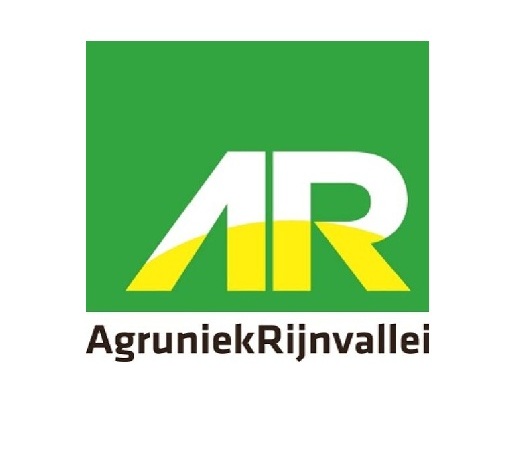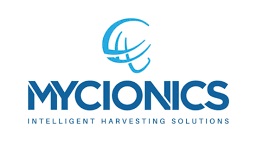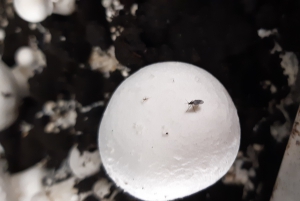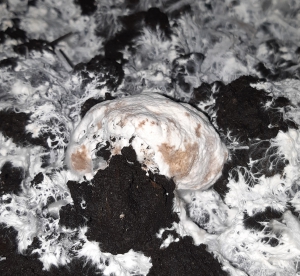Recognise, isolate and control
These three principles are the base of disease control on a mushroom farm. To my opinion there is no farm that has not a spot of disease somewhere.
But depending on what is done it will develop into a serious problem or it will stay a hidden time bomb.
If a problem is discovered it is of crucial importance that is recognised. To make sure that will happen training of people on the farm and especially pickers is needed. They are your eyes on the farm.
They need to know the most common diseases and especially in a young stage. Many places of dry bubble are not recognised and are only seen if the disease is in an almost incurable stadium. The small wart on a mushroom or grey spot is often missed.
The same goes for insects. Many growers do not know the difference between a phorid and a sciarid. Although the damage pattern is totally different, so Is the threshold where it really starts costing production. Also the cure is completely different.
Example: growers use diflubenzuron against phorids.
It is only active against sciarids.
If the disease is recognised then it should be isolated. It can be covered on the spot but the most important is to simply keep all doors closed. Check filters and door seals. If a room is infected, make sure the infection is contained in that one room and does not spread on the farm.
After the isolation the disease can be treated. If the spot is detected in an early stage one can do with just a sport treatment. If it is more the whole room should be taken on.
But too often the infection spreads and the whole farm must be treated. Generally room treatment for a full cycle with an overlap of two or three rooms to break the lifecycle of the disease.
So, just a test:
Look at the photo and spot the phorid. Or is it a sciarid?
And now for something completely different
The corona crisis makes traveling for a consultant difficult, if not impossible. That is why the question asked by Marco Deckers came just in time.
Henk, we are looking at picking on a different angle on our farm. GTL Europe is building my new farm with the tilting shelf system and we are creating a sparring team to start this up.
Now, that’s what I call a challenge.
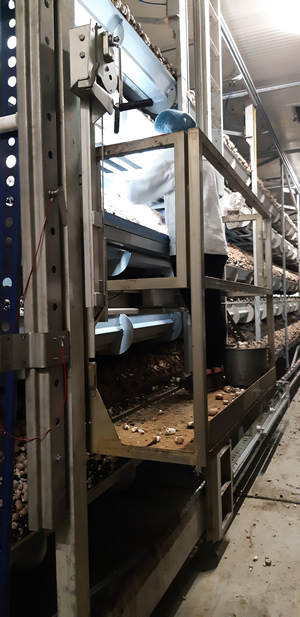 The system is so completely different that picking has to be re-designed.
The system is so completely different that picking has to be re-designed.
The pickers are not standing sideways to the shelf but they are facing it and they have to learn to pick with two hands at the same time.
At the same moment we have to get them on a level where they can work in a high tech environment where they have to keep an eye on moving belts, tilting shelves and moving trollies. And yes, they also have to learn how to pick mushrooms at a good speed.
The first thing we did was to create a good team of new pickers and new supervisors. Because also in supervising the job is different. It is very simple to control quality and size of mushrooms because every mushroom you see coming out of the room on the conveyor belt has just been picked. So corrections on size or quality can be made immediately. You do not have to wait for the first trays of mushrooms to come out of the room. So supervising is easier. The biggest change for the supervisor in this case is more in the logistic and technical areas.
For the pickers the change is bigger.
Picking with two hands sounds nice but everyone is either right- or left handed. Only few people are double handed in their natural movement. This means that every picker has a preference to pick most mushrooms with one hand and a few in the other hand.
But this was actually easier to learn than expected. One thing that helps is the picking position. The height can per perfect so the picker does not have to bend the lower back or overstretch arms. It was simply a trick the had to learn. A mind set to position the arms that way as if it is one movement. The one thing they had to learn was to pick within eyesight and keep the arms together.
All together it is surprising to see that most of the pickers like the system a lot. Picking is fast and at the end of the day nobody is complaining about neck or shoulder problems. The usual complaints of a picker after a long day of picking. It has to be said though that the picker has to be told to put the platform at the right position. Pickers all over the world are a bit stubborn and if it is nearly right, for them it is okay. But it may not be the perfect position.
Looking back now we can draw a few conclusions.
It is better to start with pickers who have no experience in picking.
The supervisor is the main person in the team. Even more than in a traditional system. There is more technique involved and the supervisor needs to see possible problems fast and solve them
People have no problems with the environment full of moving parts. Even the opposite, they like it because it makes the work easier.
Training is essential. That is why at the moment we are writing a manual for that system on that particular farm. And again, in the training the supervisor (picking manager) is the key person.
And as a consultant you have to keep an open mind about the system and the way of picking. From the start till now you can say we started with system 2.0. Now we are already operating on system 5.0. It is evolving and growing in an exciting way. That is the benefit of having a good sparring team with the farm managemant, building company, picking staff and consultant.
Mycogone: easy come, easy?
Mycogone or wet bubble is making its appearance again on many farms. Growers are looking for all different chemical solutions and are gearing up hygiene measures. Most of the times too late. Because chemicals also do a lot of damage to the crop and the schedule often is simply too short to give the right effect.
And as for gearing up hygienic measures, one real big grower once said to me:
If I have no disease I am really worried because nobody is paying attention anymore to hygiene. If on the other hand I dó have a disease everyone is doing what the can.
For Mycogone it is important to look at the origin and take that away. It is a fungus growing in soil, sand or rotting materials. That is why many growers point at the casing soil. Not really correct because it does not grow in deep dug peat because the ph is too low. But casing soil polluted with sand will be infected so it is better to look at transport, the act of casing the room and the circumstances around that.
The spores of Mycogone are not airborne by themselves. The need a vector of taxi. In most of the cases this is dust, animals, people or insects. Especially dust is a factor that is hard to control.
The moving of soil in the vicinity of the room that you are filling is a guarantee for infection. So is the harvesting of agricultural crops near the farm if the wind is blowing the dust to your farm.
So keeping the room that you are filling and the casing soil out of the wind to avoid dust is already a good thing. So is cleaning of the trucks before they enter the filling area. And flushing with plenty of water may be more effective than using a disinfectant.
At the same time keep the whole area wet so dust cannot fly around.
For growers who use casing soil in plastic bags, do not bring them into the room or wash them before use. Plastic is electro static and attracts dust.
It is a myth by the way that Mycogone comes in with the compost. It cannot grow in phase 3 compost.
The following point is people. If the filling team walks through grass or sand during filling, again that is a major failure. So is not wearing clean clothes at the moment of filing. Also do not let the filing team have their coffee break in the same canteen used by the pickers. When they return to the job they may be covered in spores.
A thing harder to control is insects. If you have an infection of sciarids or phorids on the farm an outbreak of bubble is likely to happen. But one of the next blogs will be about these creatures.
One general remark: keep the farm and the vicinity clean at all times. Free from rests of casing and compost but also free from paper, cardboard and other mess. This will help to fight all types of disease.




